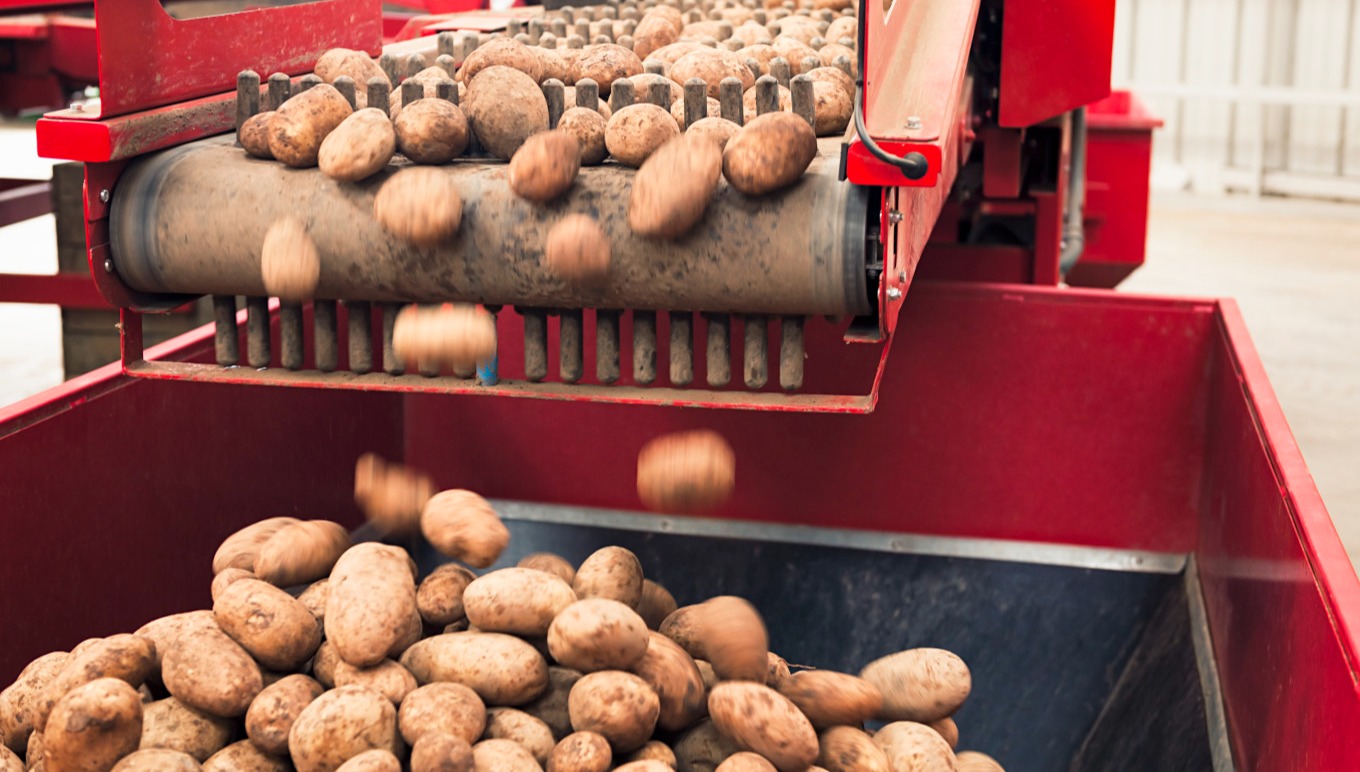Featured in this post
Lot Control for Food and Beverage Businesses and How ERP Powers Sound Practices
Lot Control for Food and Beverage Businesses and How ERP Powers Sound Practices
Jun 3, 2022
 John McCurdy | Senior Content Writer, Marketing
John McCurdy | Senior Content Writer, Marketing
Lot control has been a critically important practice for food and beverage businesses for decades, but there’s still some confusion over just what the phrase really means. In part, that’s because it goes by many names, including “lot management,” “lot tracking” and “batch management,” to name a few, and it’s also closely linked with traceability.
To clear up the matter, we’ll put it in plain terms—lot control entails recording the movement of batches of raw materials or finished goods from the beginning of the supply chain to the end. For example, a producer of applesauce with a sound approach to lot management would be able to trace the origin of their products back to the orchard where the apples were grown, all the way forward to the shelves of the grocery store where it was delivered for retail sale.
Of course, while charting one item’s path might seem like a fairly simple exercise, matters become much more complicated when you factor in the large volumes that most food and beverage companies deal with on a daily basis. Assigning unique identification numbers to lots and logging the necessary information as they transition from supplier to inventory and on to production and distribution is an involved process that requires both diligence and attention to detail.
All this being said, we still need to address all of the procedures that a solid lot control strategy requires, as well as why the practice is so vital in the first place. With no further ado, let’s jump into the answers to these questions, as well as the role that enterprise resource planning (ERP) technology can facilitate your organization’s efforts.
6 Steps for Good Lot Control
Think of these as the “key components” for a complete lot control program:
Monitor lots in real time as they move from one location to another
Ensure proper counts and quantities, then find any missing items
Track the batch during production
Make replacements when necessary
Identify any surplus items or quantities and track their origins
Flag errors in accounting and rectify them as soon as possible
One other important point to mention is the necessity of capturing ingredient lists and expiration dates for your lots. Luckily, this information will be the same for each individual item within a given batch, limiting the amount of recording that must take place, but it is nonetheless a crucial detail not to be missed for reasons that we’ll cover below.
Why Lot Management Matters
Now that you know what it takes to carry out lot control in practical terms, let’s cover why it’s an absolute must for companies like yours. Part of the equation is establishing complete traceability and maintaining transparency into the movement of your materials.
Knowing that you always have precise, up-to-date information at your fingertips will also give you peace of mind and confidence when you need to think on your feet and make quick decisions. Beyond that, though, there are three other critical concerns for which lot management is essential:
1. Avoiding Recalls and Ensuring Food Safety
Food and beverage product recalls are costly in more ways than one. Sure, there’s the average monetary cost of $10 million associated with such incidents, but there are plenty of other detrimental effects too—fines for non-compliance with regulations, damage to your brand reputation, decreased future sales and even higher insurance premiums.
Lot control helps mitigate the risk that any of your goods pose a threat in terms of food safety and streamlines tracking contaminations to their source for immediate isolation. That’s the power of complete information—whether it’s tracing allergens bi-directionally along your supply chain or discerning specifically which batch came into contact with a pathogen that could harm end consumers, you’re in full control.
2. Delivering at Peak Freshness and Reducing Spoilage
As a food and beverage industry professional, you know well how crucial freshness and preserving shelf life are for your goods, and you no doubt have minimizing spoilage and waste high on your list of priorities. After all, your customers are counting on you to deliver items within their range of viability, and anything that remains unsold when it goes bad represents potential returns you’ve missed out on for good.
Here again lot management can play a pivotal role, preserving expiration dates by batch and keeping them highly visible so that a first-expiry, first-out (FEFO) picking method can be enforced. That, in turn, should help ensure that you get the most out of what you’ve made without compromising on how fit they are for consumption.
3. Ensuring Consistent Quality
Even in the best of circumstances, quality issues arise in all manufacturing operations, and the world of food and beverage is not exempt from this truth. In these cases, it’s vital that you’re not only able to identify the affected products and others that might potentially have flaws, but also that you can get to the bottom of what the cause of the deviation was.
With the right approach to lot management, you’ll easily be able to drill down and determine where defective products are in your supply chain, as well as which batches of raw ingredients they contained and which other lots might share the same problems. From there, you can track backward to discern whether the fault lies with an external supplier or internal process and address the issue straight away.
Excelling in Lot Control with ERP
Finally, to circle back around to an important point mentioned at the outset, let’s briefly examine how ERP solutions make lot management easier. First, for those unfamiliar with this kind of software, a basic definition is in order.
ERP systems are all-in-one, cross-functional business systems that tie together all facets of operations, from purchasing and procurement to sales and distribution. They provide a fully digital backend for your material, process, marketing and financial data, and that in itself can give you an advantage in lot control—after all, the procedures we’ve discussed here would be very difficult to accomplish using paper-based methods.
What’s more, purpose-built offerings, like Aptean’s food ERP, can integrate with barcode and QR code scanners to automate the data collection process. This both speeds up the act of gathering that vital information and also all but eliminates human error, as there’s no keying in of facts or figures necessary.
One other differentiator for our solution is the fact that it is a unique, industry-specific technology built on an underlying Microsoft Dynamics 365 Business Central platform. That gives it a familiar, user-friendly interface, allowing your employees jump in and get to work in the system with minimal additional training.
Finally, consider our long track record of successful implementations, with thousands to date around the world, as well as the option of flexible cloud-based deployments for a lightweight and highly accessible setup. And it’s all backed by dedicated IT teams providing support and uptime of 99.9% or better.
Now, if you’re eager to learn more about Aptean Food & Beverage ERP and how it can help your company master lot management, contact us. You can also request a personalized demo to see the system in action.
Dealing with Disruptions in the Food and Beverage Industry
Disruptions are increasingly common in the food and beverage industry. Learn how ERP technology can help you tackle these challenges.



